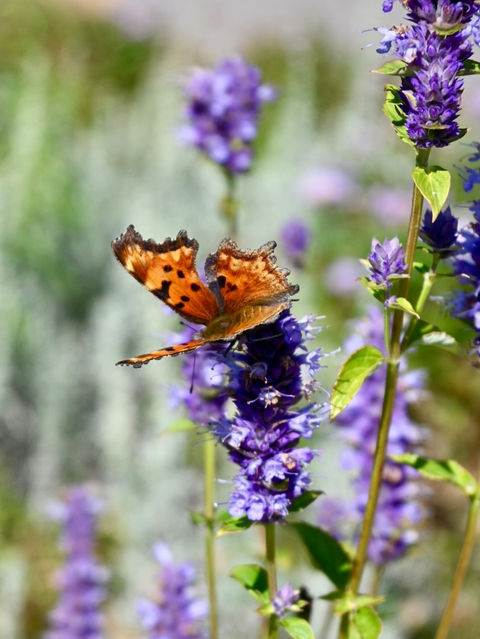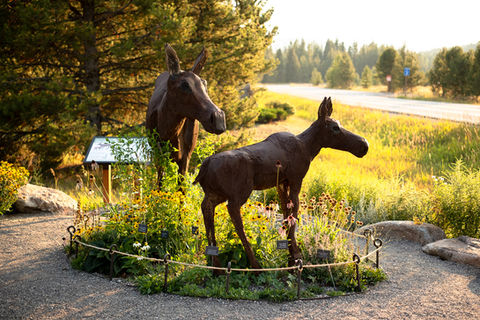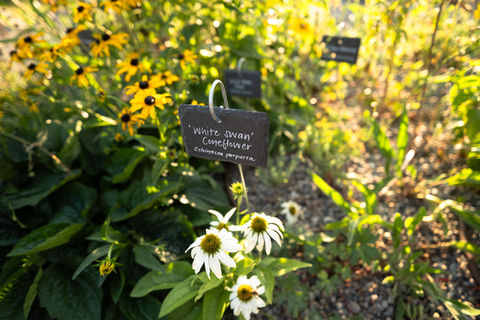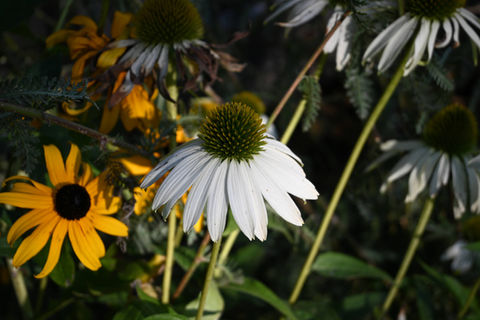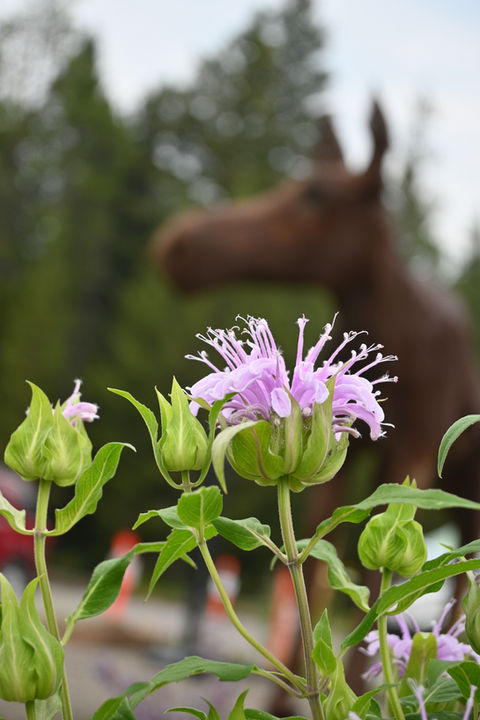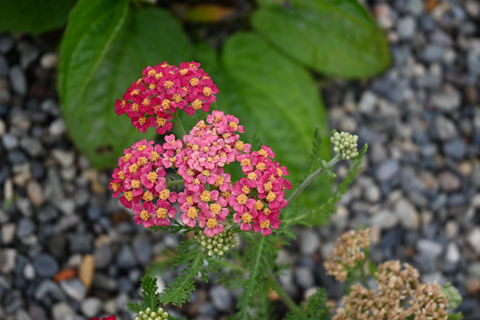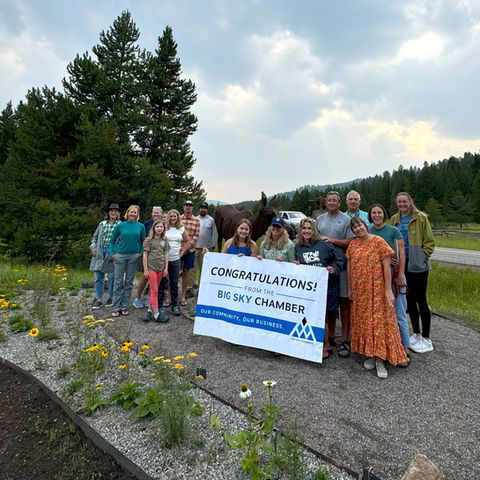Creating Habitat, Restoring Biodiversity
At Grow Wild, we create native pollinator gardens to support wildlife, strengthen local ecosystems, and connect our community with the natural world.
These vibrant spaces provide vital habitat for pollinators while promoting biodiversity, education, and environmental stewardship.
In 2024, we built native gardens at BASE and the Ousel Falls Trailhead. In 2025, we built a garden at Morningstar Learning Center. With plans to expand our impact, we invite you to scroll down and learn more.
Join Us Help our gardens—and their impact—grow. Whether you volunteer, donate, or spread the word, your support makes a difference.

3
GARDENS
600
WILDFLOWERS
PLANTED
16
VOLUNTEERS
60
VOLUNTEER
HOURS

Moose Pair
Pollinator Garden
In 2024, Grow Wild, in partnership with the Arts Council of Big Sky and with support from volunteers and partners, created a native pollinator garden beneath the moose sculpture at the Ousel Falls trailhead.
This high-traffic location offers an ideal opportunity to introduce countless visitors to the benefits of pollinator-friendly gardening.
The Power of Pollinators
Pollinators are keystone species within our ecosystem, meaning that other species depend on them for the roles they perform.
The act of pollinating a flower allows it to produce fruit that will be eaten by a diversity of wildlife, from songbirds to grizzly bears.
Additionally, pollination increases genetic diversity.
The more diverse a plant's genes, the more likely they are to survive and reproduce under stressful conditions (e.g., drought or disease).
Given the area's heavy traffic from both hikers and wildlife, we incorporated a few non-native plants into the garden.
These carefully selected non-natives are more resilient to wildlife grazing and human trampling while still offering essential habitat for pollinators.
While native plants are ideal, this demonstrates how flexibility can still support wildlife without compromising ecological benefits.
Plant and pollinators will come!
We've already had pollinators and insects arrive to make use of the newly available habitat.

A Goldenrod crab spider on 'Terracotta' Yarrow. Although known for eating pollinators, studies show that the payoff from the the spider's control of aphids and grasshoppers is an overall benefit for pollinators.
BASE Pollinator Garden
We partnered with the Big Sky Community Organization in 2024 to replace nonnative plants in the BASE entrance planter with native species—benefiting pollinators, encouraging visits to Crail Gardens, honoring our Crail Garden benefactors, and inspiring the use of water-wise native plants.
Crail Garden Benefactors:



Morningstar Pollinator Garden
July 1, 2025 - 5 people, 11.5 collective hours, 128 native plants!
“Grow Wild’s team built our pollinator garden from the ground up — supplying native plants, mulch, and expertise. Their work inspired curiosity and education about native plants and pollinators among our students and families, while beautifying our campus and creating a warm, welcoming entrance for everyone.” - Emily Reierson, Morningstar Learning Center Board Member















